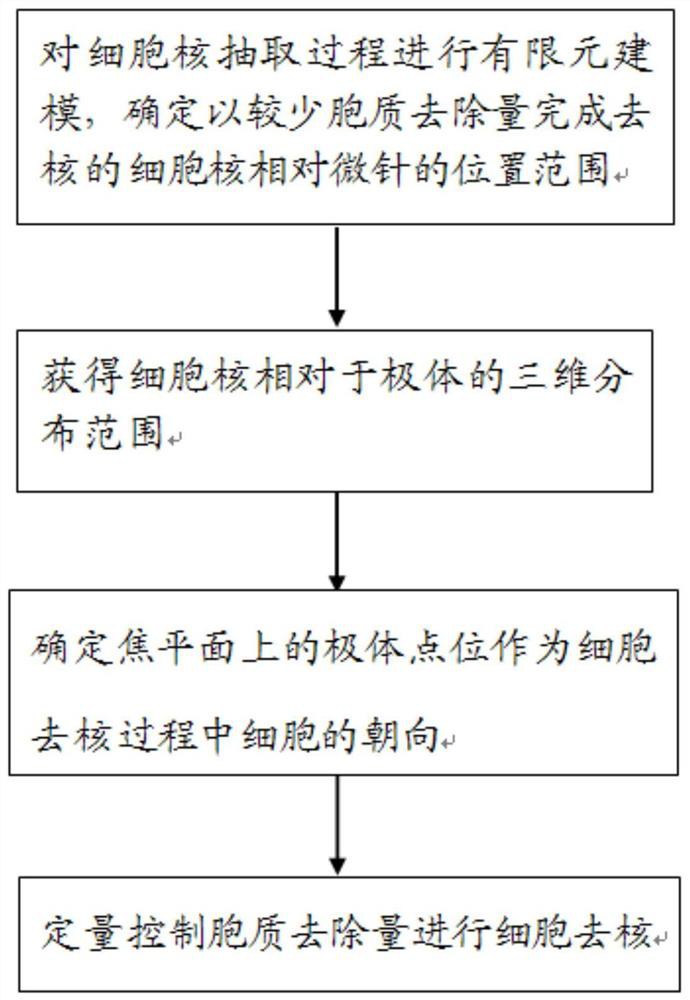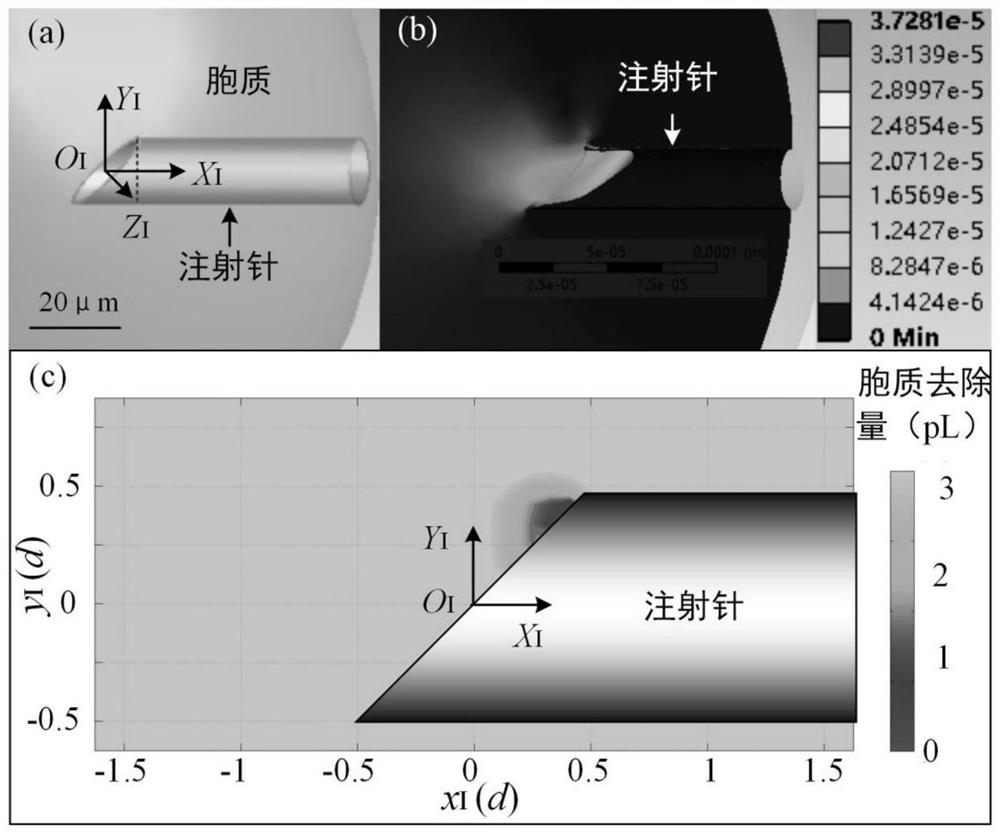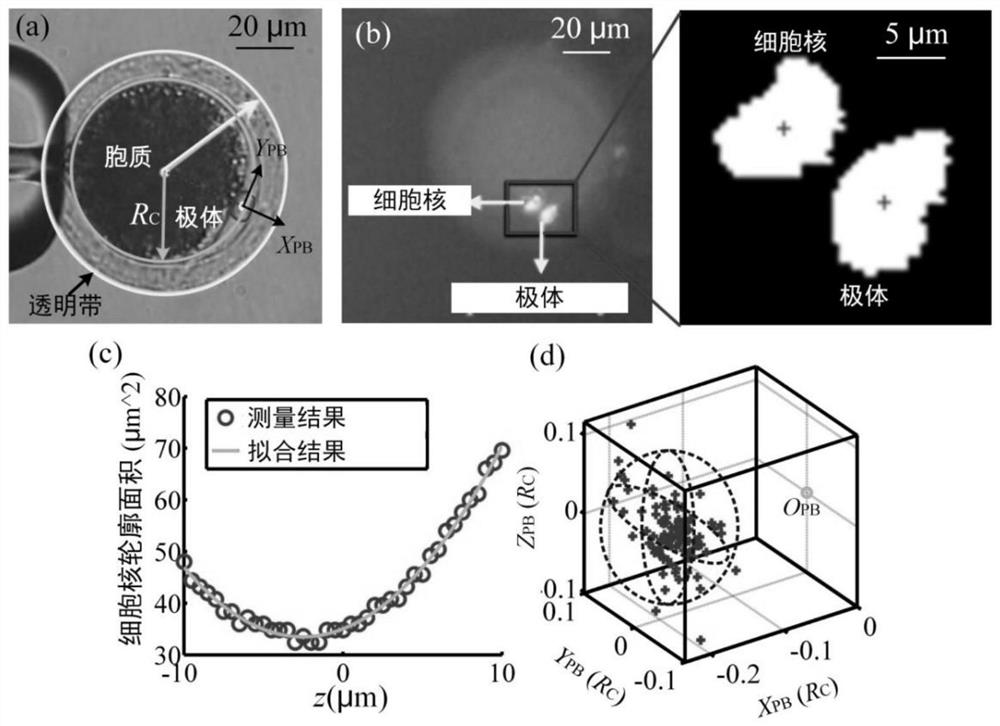Quantitative denucleation method based on cell orientation
A technology of cell nucleus and nucleus method, which is applied in the field of quantitative enucleation based on cell orientation, which can solve the problems of destroying cell nucleus and cytoplasm activity, loss of nucleus function, difficulty in determining the optimal cell orientation, etc., and meets the requirements of simple experimental equipment and developmental potential small damage effect
- Summary
- Abstract
- Description
- Claims
- Application Information
AI Technical Summary
Problems solved by technology
Method used
Image
Examples
Embodiment 1
[0037] Example 1: as figure 1 As shown in the block diagram of the flow chart, a quantitative enucleation method based on cell orientation includes the following steps:
[0038] S1, through the finite element modeling of the nucleus extraction process, obtain the distribution of the amount of cytoplasmic removal required to complete the enucleation during the nucleus extraction process at different potential nucleus positions around the microneedle tube, and determine that the amount of cytoplasmic removal is completed with a smaller amount of cytoplasmic removal. The position range of the enucleated nucleus relative to the microneedle;
[0039] S2, under offline conditions, perform three-dimensional positioning of the fluorescently stained nucleus, and compare it with the three-dimensional position of the polar body determined in bright field to obtain the three-dimensional distribution range of the nucleus relative to the polar body;
[0040] S3, calculate the point angle θ...
PUM
 Login to View More
Login to View More Abstract
Description
Claims
Application Information
 Login to View More
Login to View More - R&D
- Intellectual Property
- Life Sciences
- Materials
- Tech Scout
- Unparalleled Data Quality
- Higher Quality Content
- 60% Fewer Hallucinations
Browse by: Latest US Patents, China's latest patents, Technical Efficacy Thesaurus, Application Domain, Technology Topic, Popular Technical Reports.
© 2025 PatSnap. All rights reserved.Legal|Privacy policy|Modern Slavery Act Transparency Statement|Sitemap|About US| Contact US: help@patsnap.com



